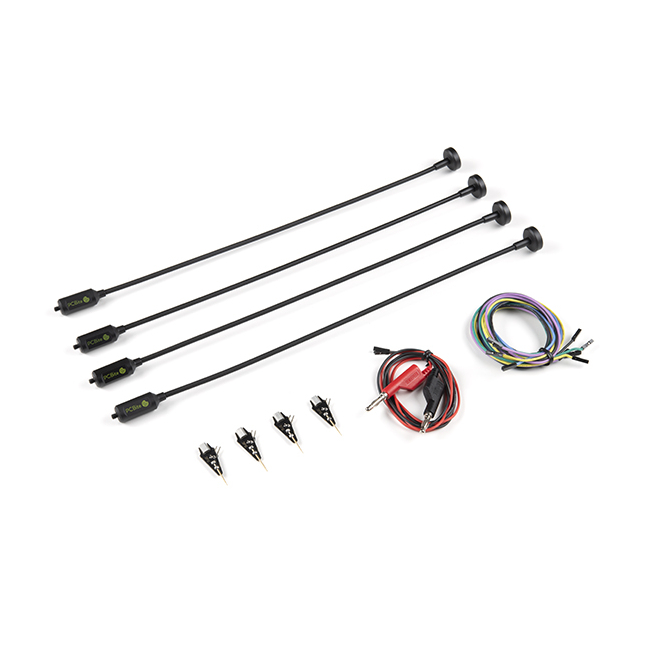PCBite SP10 Probes with Test Wires (Four Pack)
A truly hands-free probe! Makes instant measurements or long triggering sessions a breeze. No more soldering wires to connect your probe or complicated tools to setup, just position the probe needle on any test point or component in the signal path and release. Saves time and frustration during development, verification and repairs.
The minimalist design and the spring loaded test needle makes it possible to simultaneously measure on fine pitch components and nearby signals. The probe is steady but yet flexible made for instant measurements or total hands-free operations together with your multimeter, logic analyzer or prefered tool. The dual pin header connector fits directly on a 2.54mm (0.100”) connector. The SP10 comes with a powerful magnet in the base, as for all PCBite probes and holders which makes the probe easy to place and reposition.
These probes are perfect for those who already have a metal base plate and holders.
Includes:
- 4× PCBite probes with pin tipped test needles
- 4x Extra test needles
- 5x Dupont to dupont test wires
- 2x Banana to dupont test wires
Features:
- Model: SP10
- Rise time (ns), calculated: 34
- Attenuation Ratio: 1
- Needle Resistance (ohm): <0.02
- Overvoltage protection (voltage that will not damage): 200 V DC + peak AC
- Full-scale measurement range (for safe operation) Maximum Input: 1:1 Input Voltage, Fulfill the signal voltage limits of EN 61010-031:2015 - Voltage: +/-60 V DC, 30 V AC RMS, +/-42.4 V pk max.
- Maximum DC current (A): 2
- Operating Environment, Max. altitude 2km: -40 to +80 °C, 0 to 80% RH
- Storage Environment, Max. altitude 15km: -40 to +80 °C, 0 to 80% RH
- Probe tip diameter (mm): 0.5
- Probe tip angle (Degrees): 30
- Bandwidth > (MHz)*: 10
- The probe and cable are not impedance matched and are suitable for measurements below 10MHz, frequencies above 10 MHz can still be measured but with increased signal distortion on rising and falling edges using oscilloscope. The probe and cable are tested above 25 MHz with correct data decoding with common logic analyzer.
Documents:
Videos
| Manufacturer | SparkFun |
|---|




